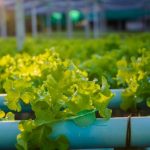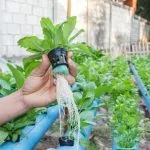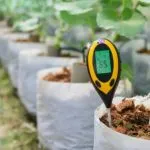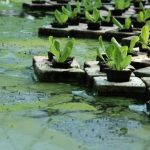Maintaining a healthy hydroponic system is no small feat, and the cleanliness of the water plays a significant role in this process. The lifespan of your plants and their growth rate can be drastically affected by how well you manage the water system. This blog post aims to guide you on how to prepare water for hydroponics and keep it clean, ensuring that your endeavor into hydroponics is fruitful and hassle-free.
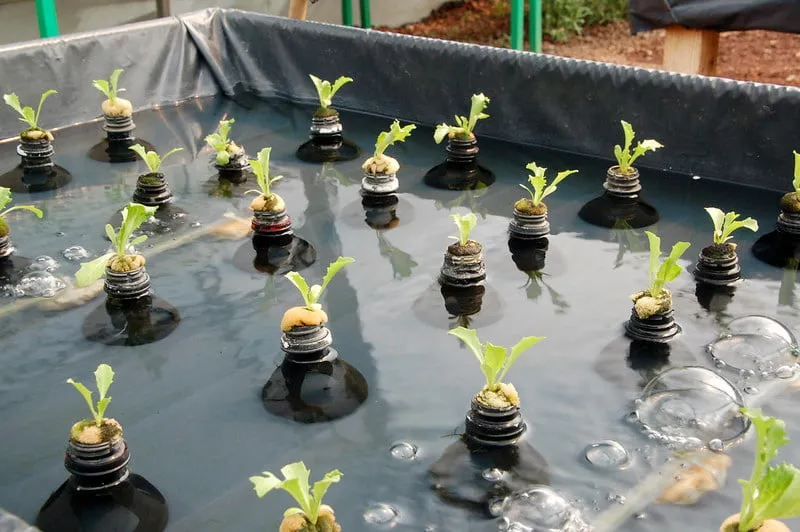
Understanding how to keep hydroponic water clean is not only essential but also inevitably impacts the overall success of your hydroponic garden. From preventing harmful bacteria buildup to encouraging optimal plant growth, maintaining clean water should be at the forefront of every gardener’s mind. Stay tuned as we delve into practical steps and tips to ensure your hydroponic water remains crystal clear, promoting vigorous and healthy plant development.
- Why is Clean Water Important for Hydroponics?
- Understanding Common Water Contaminants in Hydroponics
- Best Practices for Keeping Hydroponic Water Clean
- How to Filter Water for Hydroponics?
- How Is Water Quality Monitored In A Hydroponic System?
- Importance of Maintaining Proper Oxygen Levels in Hydroponics
- Preventing Algae Growth in Hydroponics
- Controlling Bacterial and Fungal Infections
- Cleaning & Sanitization: A Must-Do Routine
- Using UV Sterilizers or Ozone Generators
- Biological Controls: Enhancing System Health Naturally
- Commercially Available Water Treatment Products
- FAQs
Why is Clean Water Important for Hydroponics?
Clean water is the lifeblood of hydroponic systems. Understanding its importance will allow you to optimize your system’s performance and yield robust, healthy plants. In this section, we will delve into how water quality affects plant growth in hydroponics, the role it plays in preventing diseases and pests, and why clean water is essential for nutrient uptake.
The Impact of Hydroponic Water Quality on Plant Growth
Water serves as the primary medium through which nutrients are delivered to plants in a hydroponic system. Hence, the quality of water can directly influence plant growth and productivity. If the water used in these systems is contaminated with bacteria or fungi, it could compromise plant health leading to stunted growth or worse – plant death.
In addition to microbial contamination, chemical contaminants such as heavy metals can also negatively impact plant health. For instance, excess iron can cause chlorosis (hydroponic plants leaves turning yellow), while excess copper can lead to reduced root growth. Therefore maintaining optimal hydroponic water quality and maintenance of the system is crucial for ensuring vigorous plant growth.
Clean Water: A Weapon Against Diseases and Pests
Clean water also has a critical role in preventing diseases and pests in hydroponics systems. Pathogens thrive in dirty environments, and contaminated water provides an ideal breeding ground for them. Disease-causing organisms such as Pythium and Fusarium can infiltrate your system through unclean water, causing issues like root rot, which can decimate your entire crop.
Similarly, pests like fungus gnats and shore flies are attracted to stagnant or dirty water conditions. By keeping your hydroponic water clean, you not only provide an inhospitable environment for these organisms but also ensure that your plants have the best possible conditions to grow healthy and strong.
Enhancing Nutrient Uptake Through Clean Water
One of the major benefits of maintaining clean water in a hydroponics system lies with nutrient uptake efficiency. Plants absorb their necessary nutrients from the solution mixed with their irrigation water – if this medium isn’t clean, it could disrupt nutrient absorption leading to deficiencies despite having ample nutrients available.
Any impurities or contaminants present might react with the nutrients altering their availability or form; thereby affecting their uptake by plants negatively. Consequently, using clean water ensures that all nutrients remain readily available for absorption by roots enhancing overall nutrient efficiency within your system.
Understanding Common Water Contaminants in Hydroponics
Let’s explore common water contaminants you may encounter in hydroponics, their potential effects on plant health and growth, and various methods to identify if your hydroponic water is contaminated.
Algae Blooms
Algae are one of the most common contaminants found in hydroponic systems. These photosynthetic organisms can vary in color from green to brown or even red. They thrive on light and nutrients, causing them to outgrow plants for resources.
Excessive algae growth can adversely affect your plants by depleting nutrients needed for their growth. Moreover, they can clog up your system, leading to oxygen deprivation which can result in root rot and overall poor plant health.
Bacteria Invasion
Bacteria are another common contaminant that covertly threatens hydroponic systems. While some bacteria are beneficial (and necessary) for plant roots’ overall health, harmful pathogenic bacteria strains—like Pseudomonas and Agrobacterium—can lead to devastating diseases.
Harmful bacteria can cause a variety of plant diseases which include leaf blight, stem rot, and soft rot among others. These conditions can lead to diminished plant vigor, stunted growth or even death if not properly addressed.
Fungi Infestation
Fungi pose a significant threat as these organisms tend to thrive under wet conditions – making them ideal pests for hydroponic systems. These include varieties such as Pythium and Fusarium.
When fungal infections occur, they result in conditions like root rot that weaken the plants extensively. The infected plants will display symptoms like wilting leaves, yellowing foliage, slow growth rate, or sudden collapse due to weakened stems.
Be Proactive in Detecting Water Contamination
Identifying contamination early is key to maintaining clean hydroponic water. Regular monitoring of pH levels helps detect any anomalies that may suggest bacterial activity. Visual checks for changes such as discoloration or cloudy appearance also indicate possible infestations.
Best Practices for Keeping Hydroponic Water Clean
To ensure the health and growth of your hydroponic plants, maintaining clean water is an essential part. Here are some best practices to keep in mind when preparing your hydroponic water.
How to Filter Water for Hydroponics?
Filtering water for hydroponics is a crucial step in ensuring the health of your plants. Here are some steps you can follow to filter your water effectively:
- Water Source: If possible, use a reliable source of clean water. Rainwater or well water are good options if they’re available to you.
- Mechanical Filtration: First off, remove physical impurities and sediments from your water using a basic mechanical filter. A simple sediment filter with around 5-micron rating will be good enough for this purpose.
- Carbon Filters: Next, use an activated carbon filter to remove organic compounds and chlorine. These substances can harm useful bacteria needed by plants and affect nutrient uptake.
- Reverse Osmosis (RO) System: For best results, implement a reverse osmosis system after mechanical and carbon filtration steps. This would ensure that most contaminants like salts, minerals, and heavy metals are removed from the water.
- Re-mineralization: RO systems might also strip away necessary minerals from the water, so it’s recommended to re-mineralize it afterward according to your plant’s needs.
- pH Adjustment: Hydroponic systems require a specific pH range for optimum growth (usually between 5.8 and 6.2). After filtering the water, make sure to adjust its pH using appropriate solutions and keep testing with a pH meter.
- Check Regularly: Finally and importantly, always make sure to regularly check your filtered output for conductivity (EC), pH, temperature etc., as these factors could affect plant health immensely.
How Is Water Quality Monitored In A Hydroponic System?
Conducting Tests for pH, EC, and PPM
Regular testing is absolutely required. This includes monitoring the pH level, electrical conductivity (EC), and parts per million (PPM) counts of your nutrient solution.
Observing Temperature Fluctuations
In addition to chemical parameters, it’s crucial to monitor temperature fluctuations as these can promote microbial growth which may potentially harm your plants. What temperature should hydroponic water be? Find out in our extensive guide.
Importance of Maintaining Proper Oxygen Levels in Hydroponics
Dissolved oxygen plays a vital role in plant health by promoting root growth and nutrient uptake. Insufficient oxygen levels can stunt plant growth and even lead to root diseases. Proper oxygenation is the first step in preventing root rot in hydroponics.
Methods to increase oxygenation of hydroponic water include using air stones or diffusers that create tiny bubbles to increase surface area exposure between water and air, enhancing oxygen dissolution.
Preventing Algae Growth in Hydroponics
Algae usually grow due to excessive light exposure on stagnant waters rich with nutrients – conditions often found in hydroponic systems.
Using light-blocking techniques such as opaque reservoirs or covers can help prevent algae formation. Also consider reducing nutrient levels if you see persistent algae issues.
Controlling Bacterial and Fungal Infections
Bacterial and fungal infections pose significant risks; they not only affect plant health but can also clog irrigation lines leading to operational problems.
Preventive measures include sterilizing equipment regularly and introducing beneficial bacteria that outcompete harmful pathogens.
Cleaning & Sanitization: A Must-Do Routine
Regular cleaning of reservoirs, pipes, and other system components helps keep pathogens at bay. Use safe cleaning agents designed specifically for hydroponic systems – bleach diluted at appropriate concentrations is a common choice among growers. Hydrogen peroxide is another natural cleaning agent in hydroponic systems. Read our step-by-step guide on how to clean a hydroponics system.
Using UV Sterilizers or Ozone Generators
UV sterilizers or ozone generators can significantly help maintain water cleanliness by killing harmful microorganisms without leaving residues behind. Choose the type based on your specific needs regarding budget, operation size, ease-of-use among others factors.
Biological Controls: Enhancing System Health Naturally
Beneficial insects or microorganisms are effective at controlling pests without introducing harsh chemicals into your system – think ladybugs against aphids! They present an eco-friendly solution while keeping up plant health effectively.
Commercially Available Water Treatment Products
There are commercially available products specially formulated for treating water in hydroponic systems that cater towards different specific needs – pH balance control, disinfectants etc. Consider their benefits along with potential impacts on crop safety before choosing one suitable for your setup.

